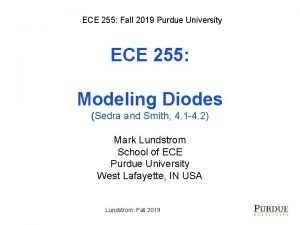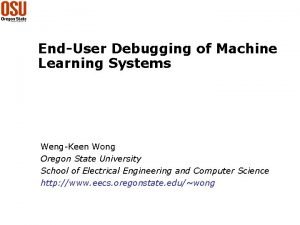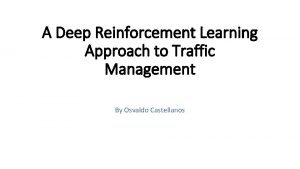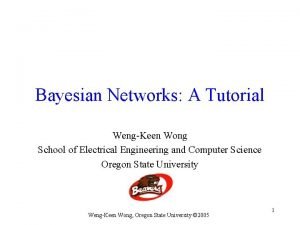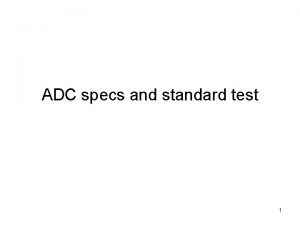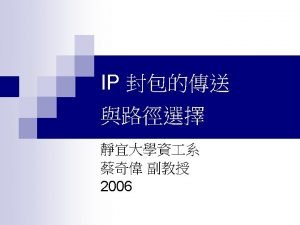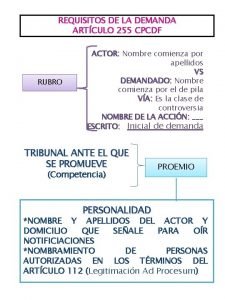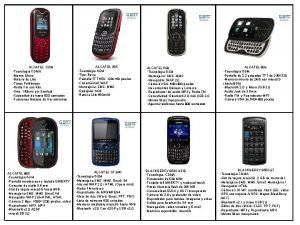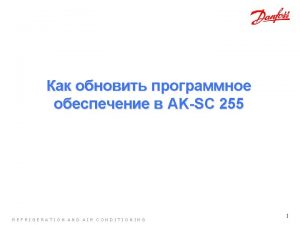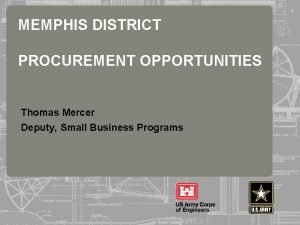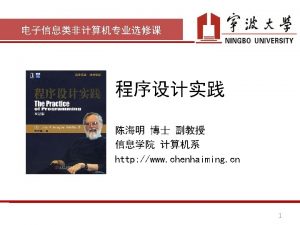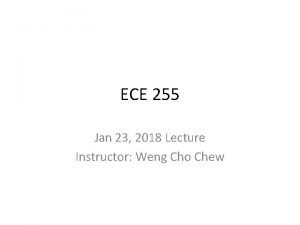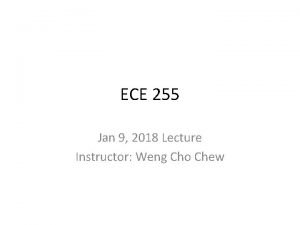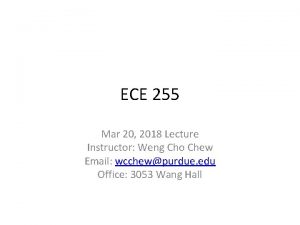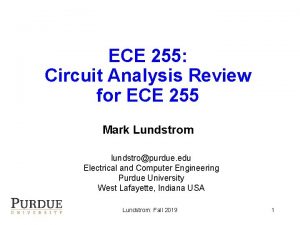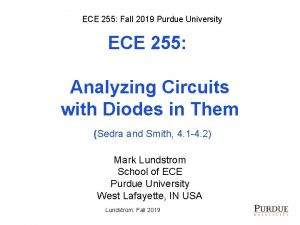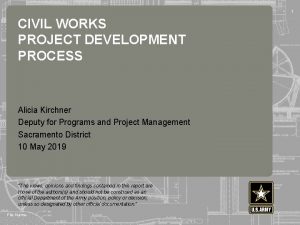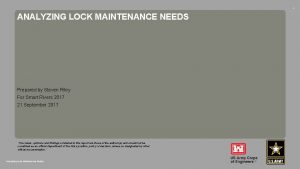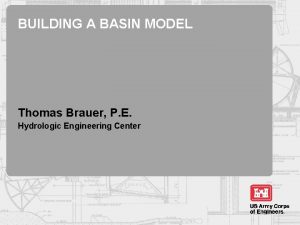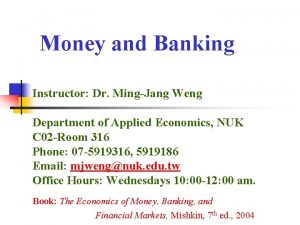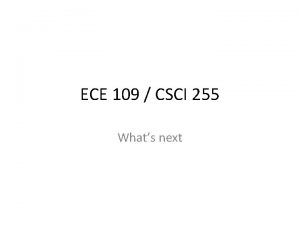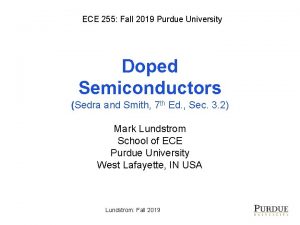ECE 255 Jan 11 2018 Lecture Instructor Weng





















- Slides: 21

ECE 255 Jan 11, 2018 Lecture Instructor: Weng Cho Chew

Random Walk • The carriers move about randomly by thermal agitation. • They do not have a preferred direction and the average current is zero.

Drift Current • An applied electric field causes the random walk to be non random. • The carriers move in a preferred direction on average.

Drift Current, Contd. • The charged carriers moves in a preferred direction acquiring a velocity. • The hole carrier velocity is in the direction of E field. • The electron carrier velocity is opposite to the direction of the E field. • The constant is the hole mobility. is the electron mobility.

Drift Current, Contd. • If the charge density is Q, then the current density is Qv. • Here,

Drift Current, Contd. • Total drift current: • Or • The conductivity is • The resistivity is

Drift Current, An Example

Drift Current, Contd. • Drift current in a ptype material. • The majority carrier is hole. • Both carriers (majority and minority) contribute to the total current.

Diffusion Current • Particles diffuse from region of high concentration to region of low concentration. • For gas, it is the collision forces that cause them to diffuse apart. • For charge carriers, it is the like charges they are carrying that cause them to repel each other.

Diffusion Current • Diffusion current is due to concentration gradient: They are also called diffusion constant or diffusivity.

Diffusion Current and Recombination Rate • A possible concentration profile is exponential: • The above implies that: • If then,

Drift-Diffusion Current, Summary • Both types of carriers contribute to diffusion current: • Both drift and diffusion currents contribute to total electric current:

PN Junction • When n-type and p-type materials are joined together. • A carrier depletion region (also called space charge region) is formed by diffusion. • An internal electric field is formed to preclude further diffusion. • An internal electric field or potential barrier is formed. Now, Uncovered charges

PN Junction, Contd. • By Boltzmann’s law: • From the above, it follows that: • At the far left: • At the far right:

PN Junction, Contd. • Finally, junction built in voltage is: • Einstein relationship Thermal voltage • Once the mobility is known, the diffusion coefficient is known. • The higher the temperature, the higher the diffusion coefficient.






Clicker Question 1 (0 Point) What causes the diffusion current to flow? (A) Concentration gradient (B) Electric field (C) Random walk
 Rgb 0 255 255
Rgb 0 255 255 Ece 255
Ece 255 Weng-keen wong
Weng-keen wong Lil weng
Lil weng Zhiping weng
Zhiping weng Weng-keen wong
Weng-keen wong 01:640:244 lecture notes - lecture 15: plat, idah, farad
01:640:244 lecture notes - lecture 15: plat, idah, farad January 2009 chemistry regents answers
January 2009 chemistry regents answers Jan 31 2018
Jan 31 2018 Que letra continua m v t m j
Que letra continua m v t m j 4096/255
4096/255 0 255
0 255 Mp 255
Mp 255 Requisitos de la demanda art 255
Requisitos de la demanda art 255 Sp 255 warszawa
Sp 255 warszawa Alcatel 255
Alcatel 255 Ak-sc 255
Ak-sc 255 Bakara süresi 255 ayet
Bakara süresi 255 ayet 255-237
255-237 Welcome lodge 255
Welcome lodge 255 255 characters
255 characters Unsigned char 0
Unsigned char 0

